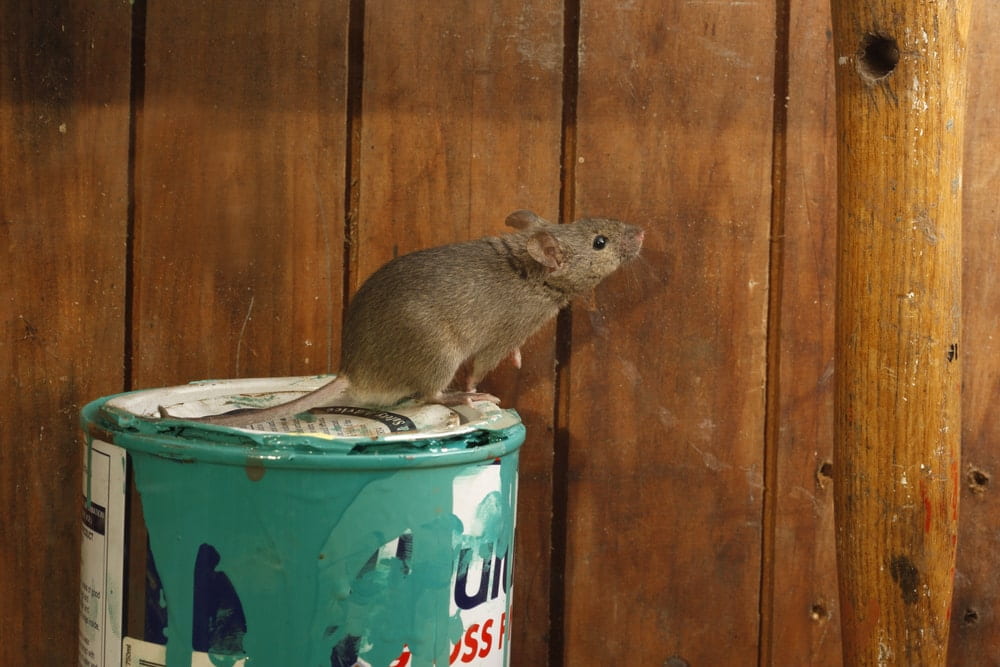Whether you find them spooky or cute and fuzzy, mice are one of the most destructive little critters to invade our homes. Spoiling food, spreading diseases, nibbling through electrical wires, and causing general mayhem are what these little guys are famous for. Not all mice are pests, however. Grasshopper mice, for example, eat exclusively insects and therefore don’t often poke around our homes like their more intrusive counterparts, the house mouse or the deer mouse. In order to keep house and deer mice away from your castle, there are a few pre-emptive strategies you can put in place, both outdoors and indoors, to discourage an invasion.
Outdoor Measures
Mice are big fans of overflowing garbage cans. To combat this, switch to metal trash cans, if you aren’t already using them, and keep both your yard and back alley garbage and litter free. Anything tasty left about or something tempting to hide under is an open invitation for a mouse to set up camp, so keeping the clutter and trash out of your space is the first step in prevention. Sealing any cracks around the foundation of your home is also a good idea. Any crack larger than one fourth of an inch is perfect mouse size. Some folks also recommend keeping landscaping to a minimum, as dense flowerbeds and foliage are perfect to house a little mouse village. This is obviously by preference, and if you are an avid green thumb, just remember to set up some state of the art decoys in your garden to help ward off critters. Don’t settle for the immobile plastic owls however, as once a mouse figures out the decoy doesn’t move, it moves in. However, there’s a much more advanced version on the market that when hung from a tree, mimics the movement of the wind and appears frighteningly lifelike in the eyes of a critter.
Indoor Measures
Even if your yard is spotless, mice may still migrate to the warmth and ample food in your home. Just like outdoors, keeping your home free of trash and garbage is very important. Also similar to outdoor prevention, sealing any cracks or holes from the inside is essential. Mice are experts at fitting into tight spaces, so if you can find a hole or a crack the size of a dime, a mouse can likely fit through it. The best material to use to plug or cover these holes is copper wool, as mice will chew through caulking and foam. Steel wool is also chew proof but tends to rust a lot quicker, so only use it if you don’t have access to copper wool. Keep in mind that plugging every hole in your house may make the air rather stale. Using aluminum window screens over windows, chimneys, and vents are your best bet to manage airflow. Food should be kept off the floor and sealed and stored properly. If you have a pet, keeping their pet food tightly sealed is a must, as well as not leaving any pet food out overnight. If your pet happens to be a cat, they will definitely be of help to keep the mice at bay!
If all else fails and you happen to find signs of mice droppings or chewed up boxes; dried goods; pet food; or anything, don’t panic. The technical team at One Man and a Lady Bug have got your back with the fight against rodents. Suspect an invasion? Call us at 403-262-1666, and our friendly staff will be happy to help!



